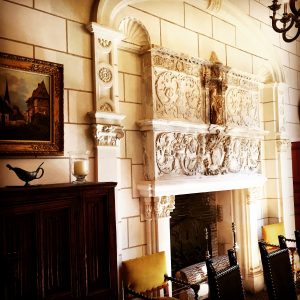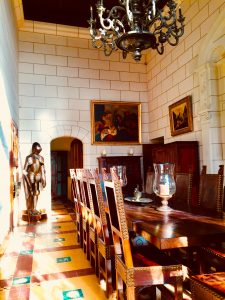Milestone:
The Amboise Conspiracy
The Amboise Conspiracy in March 1560 was a failed attempt to kidnap King François II by Protestant gentlemen in order to free him from the influence of the Guise family. This event foreshadowed the forthcoming Wars of Religion.
CONTEXT
Following the death of King Henri II in 1559, Protestants hoped for an end to repression, but the young King François II entrusted the government to the Guisa family, who were proponents of a firm policy against the Reformists. The torture and execution of Anne du Bourg in the following December demonstrated this determination. The maternal uncles of Queen Mary Stuart, François de Guisa and Cardinal Charles de Lorraine, wielded great power over the king and directed royal policy by suppressing Protestantism with the support of the Edict of Écouen. The princes of the blood, Antoine de Bourbon and his brother Louis de Condé, refused to provoke open conflict with the court and took no action to overthrow the Guise family. Consequently, provincial gentlemen decided to take matters into their own hands by organizing a plot to seize the king and his family by force.
PREPARATION FOR THE PLOT
The Lord of La Renaudie, Jean du Barry, led the conspiracy. He was a nobleman from Périgord who harbored great animosity towards the Guisa family since the execution of his brother-in-law, Gaspard de Heu. He gathered other gentlemen from across France.
However, both Jean Calvin and most Protestant pastors refused to resort to violence and condemned the conspirators’ plan. Prince de Condé also refused to participate in the conspiracy, although he awaited in Orléans to reap the benefits of the plot; he was referred to as the « silent captain » in the conspirators’ correspondence.
Bourgeois from the cities of Orléans, Tours, and Lyon were also involved in the conspiracy. On February 1, 1560, the conspirators met in Nantes to devise a plan.
FAILURE OF THE CONSPIRACY
The Guisa family received warnings about the plot in February and March. Initially believing it came from foreign sources, they were informed about the conspiracy by a Parisian lawyer on February 12. On February 22, they transferred the king and the court to a more fortified castle and strengthened its defenses.
The conspiracy was postponed to March 16 after a search of the surroundings of Amboise led to the arrest of the initial conspirators on March 10. Multiple arrests occurred until March 16, most of them peaceful. The Protestants hoped to express their grievances to the king before taking action.
On March 17, the Huguenots launched an attack but were quickly suppressed and subjected to severe punishment. The conspirators were hanged, drowned, or massacred by the crowd. The leader of the rebels was killed on March 19, and his body was displayed in pieces. The repression resulted in between 1,205 and 1,500 deaths. On March 17, the Duke of Guisa received the general lieutenancy of the kingdom from King François II.



